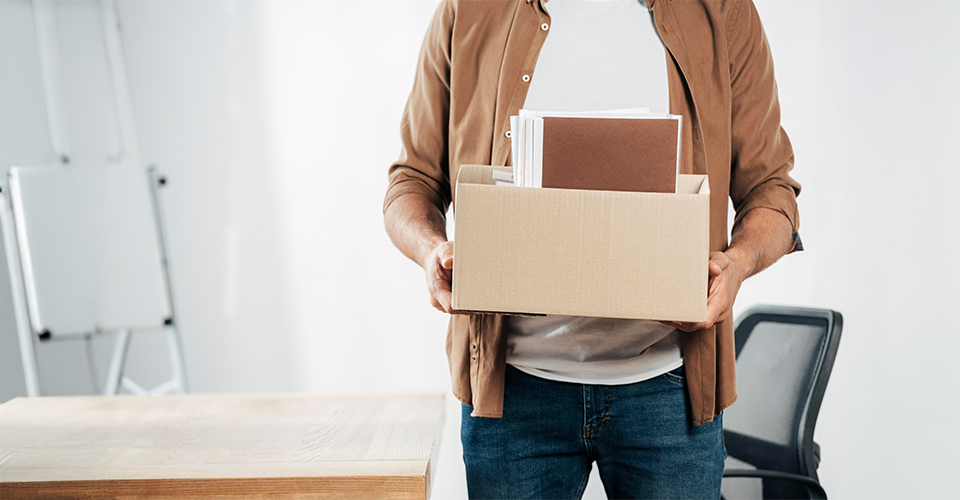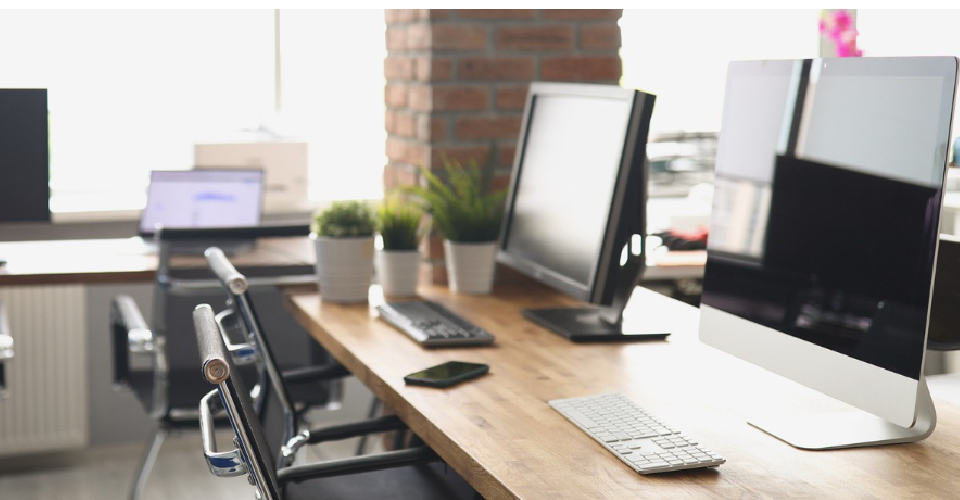 If you're relocating your office or business, there are many things to consider like office supplies, expensive office equipment, important paperwork, desks and furniture and office decorations when packing up your office efficiently.
If you're relocating your office or business, there are many things to consider like office supplies, expensive office equipment, important paperwork, desks and furniture and office decorations when packing up your office efficiently.
Learn useful tips for packing up your office items for moving to ensure everything arrives at your new office location organized and safely.
Get rid of unwanted items
When you are planning an office move, you may find your files, paperwork and other documents that are scattered around your desk or drawers. Go through them one by one and see what you can get rid of.
Here are some steps on how to organize office desk, drawers or cubicle:
-
Purge unnecessary office files : Declutter, empty, shred and get rid of unwanted files in advance to lighten your moving load.
-
Clear off your office desk : Remove all the desktops, papers, and other items from your desk and collect all important documents inside a plastic bag. You can discard the outdated paperwork that you won't use after the move. Here's how to organize your home office or desk at work.
-
For your home office desk : Shred anything that you don't need any more which may include printed emails, credit card applications and other junk mail. File your old tax returns, financial records and bill statements/receipts, birth certificates, medical records and school records.
-
For your office desk at work : Find out what your company's protocol is in regards of disposing of old documents. It may be to shred them, it might be to recycle or they might not have a protocol in place, so find out before you start shredding. Keep purchase orders, expense reports, time sheets, etc. and anything else your boss advises you to keep for your new location.
Note: Keep the most confidential documents with you! Tag or bundle your documents and paperwork together using specific color rubber band to keep them organized.
-
Empty your drawers : Go through each drawer and discard of old junk that has accumulated over time. Dispose - dried up pens, mostly filled notepads, bent and useless paperclips, and other mostly useless items.
If you have any books that you would like to move with you to your new office, sort out the books into category and pack them separately in a box according to their sizes. Always remember to keep the spine against the box wall so that the open part is facing you. In this way, the binding won't be damaged.
Read our guide: How to pack books to move your books to your new office safely.
-
Pack your personal items :
Once you declutter your office and decide what items you want to bring with you to your new office, you can begin packing office décor and other personal items for moving.
Here's how to pack office décor and other personal items for moving:
-
Pack framed photos, coffee cups and other decors in packing paper and bubble wrap and place them a cardboard box to ensure they don't break during the move.
-
If you have any valuable artwork, use special telescoping boxes for packing artwork and mirrors. Make sure to purchase insurance to protect against loss or damage. To get more information on packing your framed artwork, and other valuables, read our guide how to pack artwork and antiques.
-
Prepare plants and other miscellaneous items for the move.
Note: Remember, movers will often not transport live plants on a moving truck, so you will have to transport greenery on your own.
After packing office décor, the next step will be to prepare and pack office equipment and electronics.
Office electronic equipment

Computers, printers, office phones, wireless routers, printers and fax machines are the most valuable items in your office. So, you'll want to make sure these items are properly protected from any damage during the office move. Each item will need to be packed separately. Here are some few tips for packing office equipment and electronics:
-
Be sure to back up all he important data to a hard drive or cloud service prior to moving day. This will also make it a cinch to get some work done from your laptop while your office is in transition.
-
Keep all wires and cables properly separated and organized to prevent chaotic tangling during the move. Use zip ties to keep wires bundled, and label them for easy identification. You can also pack like wires in their own boxes (for example, Ethernet cables in one box, USB cables in another) or pack wires with the appropriate equipment.
-
Use plenty of padding materials when packing office equipment like printers, scanners, fax machine, phone system, internet connectivity, and other office equipment in their original boxes is optimal. If you no longer have these available, be sure to use extra-sturdy, professional-quality boxes and plenty of padding.
-
When packing computers, make sure all the wires are disconnected from all of its parts and pack each component carefully in its original boxes.
-
Wrap and secure computer peripherals like computer tower, mouse, keyboard, and monitor stand separately in moving pads.
-
When packing laptop computers, use a laptop bag if you have one, if you don't have a backpack, choose a box that isn't too large and fill any voids with packing materials.
-
Once you pack office equipment and electronics thoroughly and placed into moving boxes, you can close the box and seal with a few layers of durable packing tape (make sure you gently shake the box prior to sealing it to ensure you have added enough padding inside).
For more information on packing electronics, read our guide how to pack a computer for moving
Packing office furniture (Office desk, drawers or cabinets, cubicals)
Now that your office is empty and organized, the next step will be to pack office furniture and cubicles.
Here are some steps on how to pack cubicle and office furniture when moving.
Office desk
-
Disassemble the office desk: Before packing office desk, it's better to disassemble the desk into as many parts as possible. Unscrew and remove all the drawers, racks and other parts of office desk.
Tip: Make sure to keep all nuts, screws, and bolts in a Ziploc bag to avoid losing them.
-
Wrap each piece of the office desk in protective blankets to protect it against any kind of damage. Wrap each desk drawer carefully in protective pads and secure it with the packing tape. Make sure the packing tape doesn't touch any part of the office furniture as it could leave marks.
Tip: The best way to protect drawers is to wrap them in plastic stretch wrap them for easy and safe transit.
Filing cabinets or drawers
If you have hired a moving company, they will more than likely do this part for you. However, if you are part of a small company, there's a chance you may need to handle some of the larger packing aspects:
-
For vertical cabinets with only two drawers : Before packing filing cabinets, make sure all cabinets are locked. And protect all its shelves and cabinets with a few layers of strong shrink or bubble wrap.
-
For lateral cabinets containing three or more drawers : Lock all drawers and wrap cabinets in bubble or shrink wrap for added protection (all file cabinets can, however, be moved without such materials)
-
After packing cabinets, place them into moving boxes and mark each box with a brief description of its contents (for example, invoices) and the desk or department with which it belongs in your new location (if you have that information). If the contents of the box are confidential, that should also be indicated on the labeling.
Cubicles
Packing and moving cubicles can create a problem unless you have a right plan of action. So, when you are packing cubicles for a move, make sure the cubicle walls should be disassembled and wrapped in protective padding. This helps to prevent walls from falling apart and causing damage or injuries.